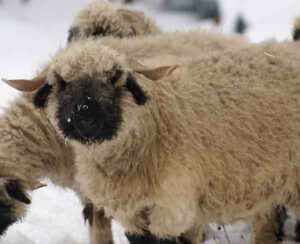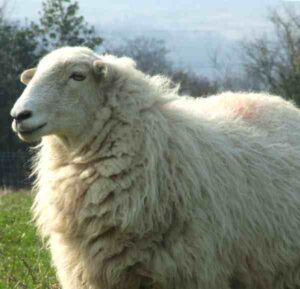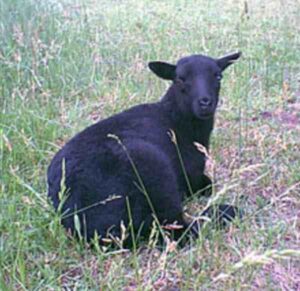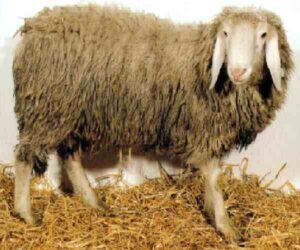The Poll Merino sheep is a breed of domestic sheep from Australia. As the name suggests, these animals are polled, that means they have no horns.
It was developed in Australia in 1825, and Alexander Riley was the first breeder to obtain a poll ram with a view to establishing a poll Merino sheep flock.
He imported the ram from Germany, along with Saxon ewes, Bungaree, Boonoke, Uardry and Wanganella studs made specific mention of poley or poll rams for sale from the early 1880s.
During that time, the first conscious attempt was made to breed the modern type Poll Merino sheep by the Munros at Webollabolla, Moree, New South Wales.
And in Australia, this stud is the oldest Poll Merino stud. During 1932, the Kirkby Poll Merino studs were started in Moree, Merryvile Poll in 1938 and Boonoke Poll in 1934.
The early Western Australian studs purchased Boonoke poll rams. Otway Falkiner started the Boonoke Poll Stud using 13 ‘sports’, which had no horns, from the Boonoke 1934 drop of nearly 9,000 rams, from this group of thirteen rams, eight where put over 400 Boonoke ewes the following year.
And in the year of 1937, the first offering of Poll Boonoke rams shown to the public.
Currently many studs are breeding the Poll Merino sheep to cater for the increased demand for these easier to care for animals. Read some more information about this sheep breed below.
Poll Merino Sheep Characteristics
Poll Merino sheep are medium to large sized animals. They are relatively large framed animals and are plain bodied.

They produce good quality fleece which is soft handling and of good color. They are now found in the various strains of Merino sheep.
As the name suggests, these animals are polled. Meaning that, they have no horns. Photo and info from ansi.okstate.edu and Wikipedia.
Uses
The Poll Merino sheep are dual-purpose animals. They are raised for both meat and wool production. But they are especially very good for wool production.
Special Notes
The Poll Merino sheep are very strong and hardy animals. The rams and wethers are less prone to poll strike than most other horned Merino sheep.
They are easier to handle and care for. They are also easier to handle during crutching and shearing time. They grow very fast, and highly fertile.
The Poll Merino wethers do not develop the stag horns that regular Merino wethers grow if they are not castrated early. However, review full breed profile of these sheep in the following chart.
| Breed Name | Poll Merino |
| Other Name | None |
| Breed Purpose | Meat, wool |
| Special Notes | Strong and hardy, highly valued for their quality wool production, the rams and wethers are less prone to poll strike than most other horned Merinos, easier to handle and care for, also easier to handle during crutching and shearing time, grow very fast, highly fertile, good for both meat and wool production |
| Breed Size | Medium |
| Horns | No |
| Climate Tolerance | Almost all climates |
| Color | White |
| Rarity | Common |
| Country/Place of Origin | Australia |






